Mathematical Considerations for Unmanned Aerial Vehicle Navigation in the Magnetic Field of Two Parallel Transmission Lines
Abstract
1. Introduction
2. Orientation and Localization Equations
2.1. System Overview
2.2. Orientation Determination
2.3. Position Determination
2.4. Selecting the Right Solution
3. Ambiguities
3.1. Ambiguities Due to Field Symmetry
3.2. Ambiguities Due to Signal Symmetry
3.3. Resolving the Ambiguities
- The equivalent static current I always flows away from the UAV towards that end of the transmission line to which the UAV is looking; i.e., .
- During the navigation, the UAV always remains under the transmission lines, i.e., in .
- The UAV angles never exceed the definition range D, so that . This means that the UAV never makes large turns and never flies on its back.
4. Simulation Results
4.1. SIL Design and Test Procedure
- Select the correct sign for the measurement values according to the selection criterion (27) (the SIL skips this step because it always calculates with the equivalent static current).
- Calculate the UAV angles using Equations (9) and (10) for all possible sensor combinations and calculate the average. The results are and The roll angle cannot be calculated and is assumed to be zero.
- Filter out the outliers by applying the moving median filter to the last 10 calculated values of each angle.
- Calculate the measurement values referred to the global frame via= from Equation (6). Calculate the signal powers = .
- Calculate the y-coordinates and using Equation (21).
- Select the correct signs in Equation (24) using Theorem 3 in order to reduce the amount of possible z-solutions and calculate the z-coordinates and .
- Calculate the nodes of the original polygon referred to . They are calculated from the user-defined sensor positions in and the orientation of the UAV in , i.e., . Shift the resulting polygon so that its upper left corner appears in the origin of .
- Calculate from the determined sensor positions all possible polygons and shift them so that their upper left corner appears in the origin of . The nodes of the k-th polygon are represented by .
- Compare all polygons with the original one. Therefore, first calculate the sum of the least-squared errors of the corresponding polygon nodes with:where N is the number of nodes, respectively sensors. Choose the polygons of the two smallest sums. Finally, choose one out of these two whose perimeter most closely matches that of the original polygon.
- Calculate the UAV position from the found polygon for each node using Equation (4), i.e.,Take the average of all as the UAV position .
- Filter out the outliers by applying the moving median filter to the last 10 calculated positions.
- Convert the angles to Gazebo angles.
- Strength of the current I
- Position of the transmission lines
- Number of sensors
- Sensor positions in
- The SIL can simulate white noise that is superimposed on the magnetic measurements . For this, the standard deviation can be set.
- The flight trajectory can be shifted in the -plane in order to test the algorithms, both close to and further away from the transmission lines.
4.2. Test Parameters
- Transmission lines: = 0.25 m, I = 700 A
- Two sensors aligned with . Their positions in are:
- Two sensors rotated by . Their positions in are:
4.3. Test Results
5. Discussion
6. Conclusions
Author Contributions
Funding
Institutional Review Board Statement
Informed Consent Statement
Data Availability Statement
Acknowledgments
Conflicts of Interest
Abbreviations
| SNR | signal-to-noise ratio |
| UAV | unmanned aerial vehicle |
References
- Kalmus, H.P. A New Guiding and Tracking System. Ire Trans. Aerosp. Navig. Electron. 1962, ANE-9, 7–10. [Google Scholar] [CrossRef]
- Prigge, E.A.; How, J.P. Signal architecture for a distributed magnetic local positioning system. IEEE Sensors J. 2004, 4, 864–873. [Google Scholar] [CrossRef]
- Blankenbach, J.; Norrdine, A. Position estimation using artificial generated magnetic fields. In Proceedings of the IPIN International Conference on Indoor Positioning and Indoor Navigation, Zurich, Switzerland, 15–17 September 2010; pp. 1–5. [Google Scholar]
- Blankenbach, J.; Norrdine, A.; Hellmers, H. A robust and precise 3D indoor positioning system for harsh environments. In Proceedings of the 2012 International Conference on Indoor Positioning and Indoor Navigation (IPIN), Sydney, Australia, 13–15 November 2012; pp. 1–8. [Google Scholar] [CrossRef]
- Hellmers, H.; Eichhorn, A.; Norrdine, A.; Blankenbach, J. Indoor localisation for wheeled platforms based on IMU and artificially generated magnetic field. In Proceedings of the 2014 Ubiquitous Positioning Indoor Navigation and Location Based Service (UPINLBS), Corpus Christi, TX, USA, 20–21 November 2014; pp. 255–264. [Google Scholar] [CrossRef]
- Pasku, V.; Angelis, A.D.; Dionigi, M.; Angelis, G.D.; Moschitta, A.; Carbone, P. A Positioning System Based on Low-Frequency Magnetic Fields. IEEE Trans. Ind. Electron. 2016, 63, 2457–2468. [Google Scholar] [CrossRef]
- Plotkin, A.; Paperno, E. 3-D magnetic tracking of a single subminiature coil with a large 2-D array of uniaxial transmitters. IEEE Trans. Magn. 2003, 39, 3295–3297. [Google Scholar] [CrossRef]
- Loke, W.; Choi, T.; Maleki, T.; Papiez, L.; Ziaie, B.; Jung, B. Magnetic Tracking System for Radiation Therapy. IEEE Trans. Biomed. Circuits Syst. 2010, 4, 223–231. [Google Scholar] [CrossRef] [PubMed]
- Olsen, R.G.; Farstad, A.J. Electromagnetic Direction Finding Experiments for Location of Trapped Miners. IEEE Trans. Geosci. Electron. 1973, 11, 178–185. [Google Scholar] [CrossRef]
- Wait, J. Electromagnetic Induction Technique for Locating a Buried Source. IEEE Trans. Geosci. Electron. 1971, 9, 95–98. [Google Scholar] [CrossRef]
- Caffey, T.W.H.; Romero, L. Locating a Buried Magnetic Dipole. IEEE Trans. Geosci. Remote. Sens. 1982, GE-20, 188–192. [Google Scholar] [CrossRef]
- Pinies, P.; Tardos, J.D. Fast localization of avalanche victims using sum of Gaussians. In Proceedings of the 2006 IEEE International Conference on Robotics and Automation (ICRA), Orlando, FL, USA, 15–19 May 2006; pp. 3989–3994, ISSN 1050-4729. [Google Scholar] [CrossRef]
- Vasić, D.; Ambruš, D.; Bilas, V. Analytical modelling of soil effects on electromagnetic induction sensor for humanitarian demining. J. Phys. Conf. Ser. 2013, 450, 012052. [Google Scholar] [CrossRef]
- Ambruš, D.; Vasić, D.; Bilas, V. Innovating on top of I&M fundamentals for safer humanitarian demining. IEEE Instrum. Meas. Mag. 2020, 23, 35–41. [Google Scholar] [CrossRef]
- Martinović, D. Precise Vehicle Alignment by Eliminating the Distortion of the Pulsed Magnetic Flux Density Distribution of a Charging Coil. Doctoral Thesis, University of Stuttgart, Stuttgart, Germany, 2017. [Google Scholar]
- Paperno, E.; Sasada, I.; Leonovich, E. A new method for magnetic position and orientation tracking. IEEE Trans. Magn. 2001, 37, 1938–1940. [Google Scholar] [CrossRef]
- Song, S.; Hu, C.; Li, B.; Li, X.; Meng, M.Q. An Electromagnetic Localization and Orientation Method Based on Rotating Magnetic Dipole. IEEE Trans. Magn. 2013, 49, 1274–1277. [Google Scholar] [CrossRef]
- Raab, F.H.; Blood, E.B.; Steiner, T.O.; Jones, H.R. Magnetic Position and Orientation Tracking System. IEEE Trans. Aerosp. Electron. Syst. 1979, AES-15, 709–718. [Google Scholar] [CrossRef]
- Raab, F.H. Quasi-Static Magnetic-Field Technique for Determining Position And Orientation. IEEE Trans. Geosci. Remote. Sens. 1981, GE-19, 235–243. [Google Scholar] [CrossRef]
- Jinglan, T.; Shuang, S.; Xiaojing, W.; Tingfang, Y.; Chao, H.; Meng, M.Q. An improved method and algorithm for electromagnetic localization. In Proceedings of the 2011 IEEE International Conference on Information and Automation, Shenzhen, China, 6–8 June 2011; pp. 406–411. [Google Scholar] [CrossRef]
- Ito, Y.; Kato, N.; Kojima, J.; Takagi, S.; Asakawa, K.; Shirasaki, Y. Cable tracking for autonomous underwater vehicle. In Proceedings of the IEEE Symposium on Autonomous Underwater Vehicle Technology (AUV’94), Cambridge, MA, USA, 19–20 July 1994; pp. 218–224. [Google Scholar] [CrossRef]
- Xiang, X.; Yu, C.; Niu, Z.; Zhang, Q. Subsea Cable Tracking by Autonomous Underwater Vehicle with Magnetic Sensing Guidance. Sensors 2016, 16, 1335. [Google Scholar] [CrossRef] [PubMed]
- Yu, C.; Xiang, X.; Lapierre, L.; Zhang, Q. Robust Magnetic Tracking of Subsea Cable by AUV in the Presence of Sensor Noise and Ocean Currents. IEEE J. Ocean. Eng. 2018, 43, 311–322. [Google Scholar] [CrossRef]
- Martinović, D.; Binz, C.; Reuss, H.C. Magnetic Field based Localization of the Charging Coil using Trilateration. In Autoreg 2015—VDI-Berichte 2233; VDI Verlag GmbH: Düsseldorf, Germany, 2015; pp. 129–140. [Google Scholar]
- Hisung, M.; Martinović, D.; Reuss, H.C. Feasibility study on the basis of a prototype for automated vehicle positioning in inductive charging process. In Proceedings of the 19. Internationales Stuttgarter Symposium; Springer Fachmedien: Wiesbaden, Germany, 2019; pp. 667–678. [Google Scholar] [CrossRef]
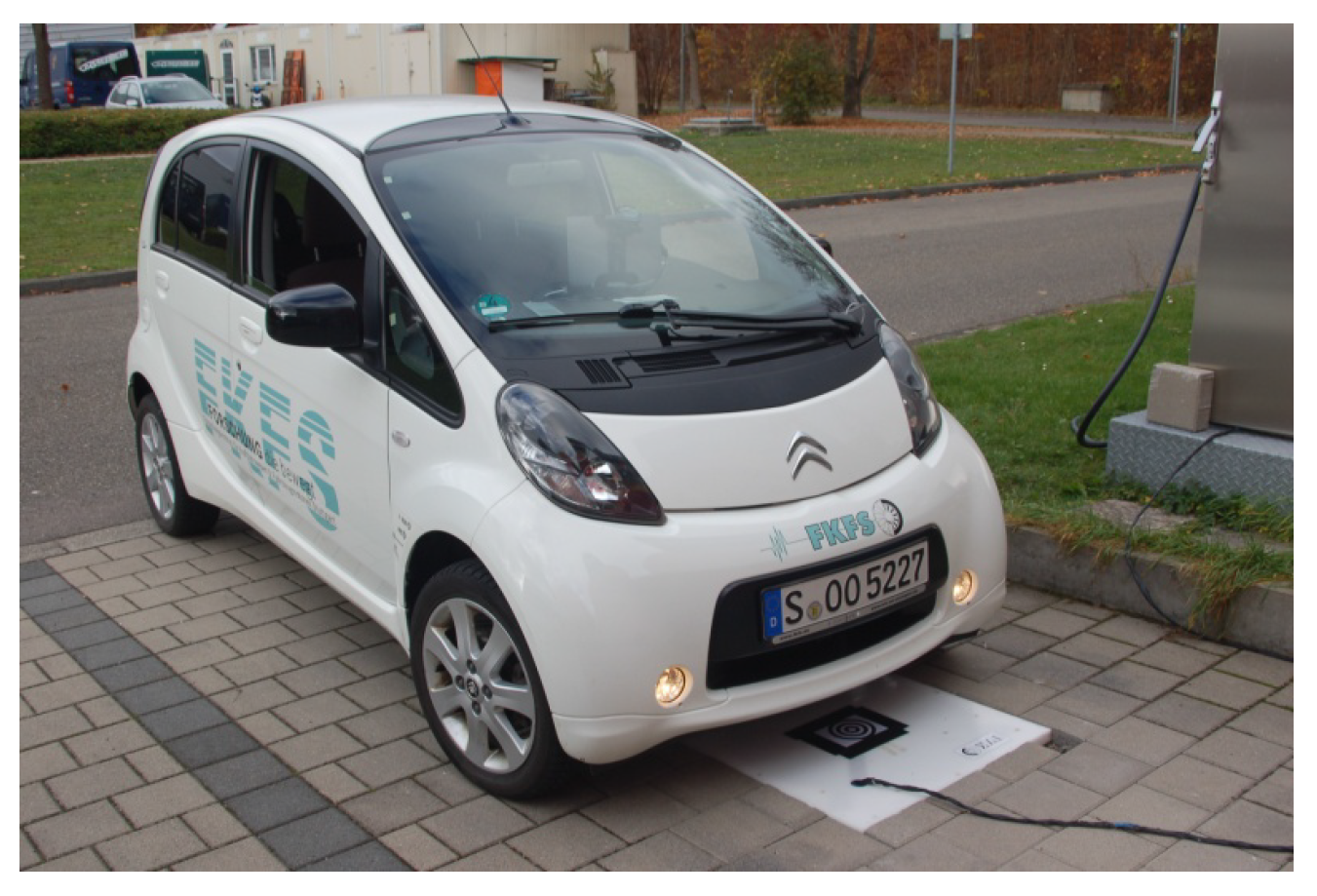
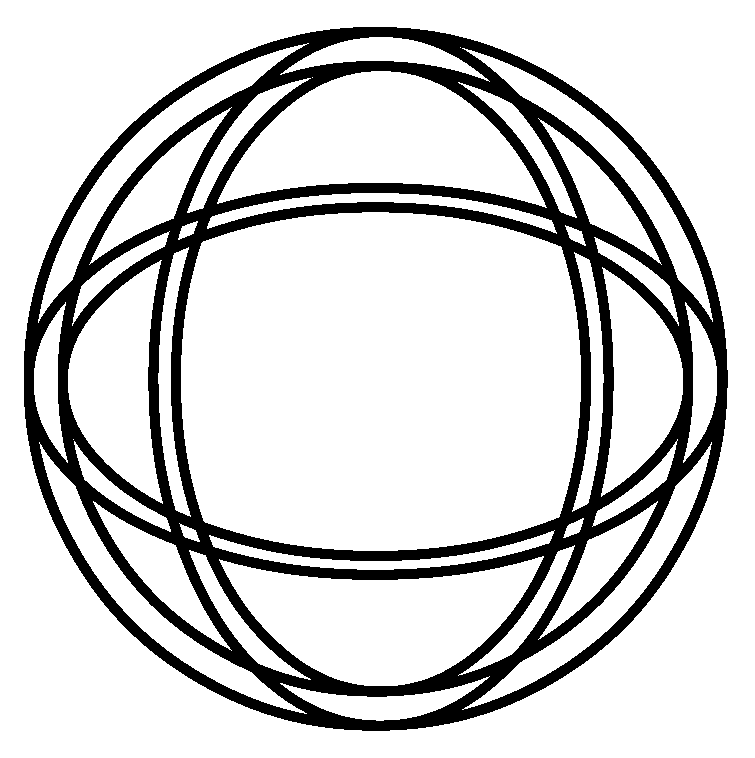

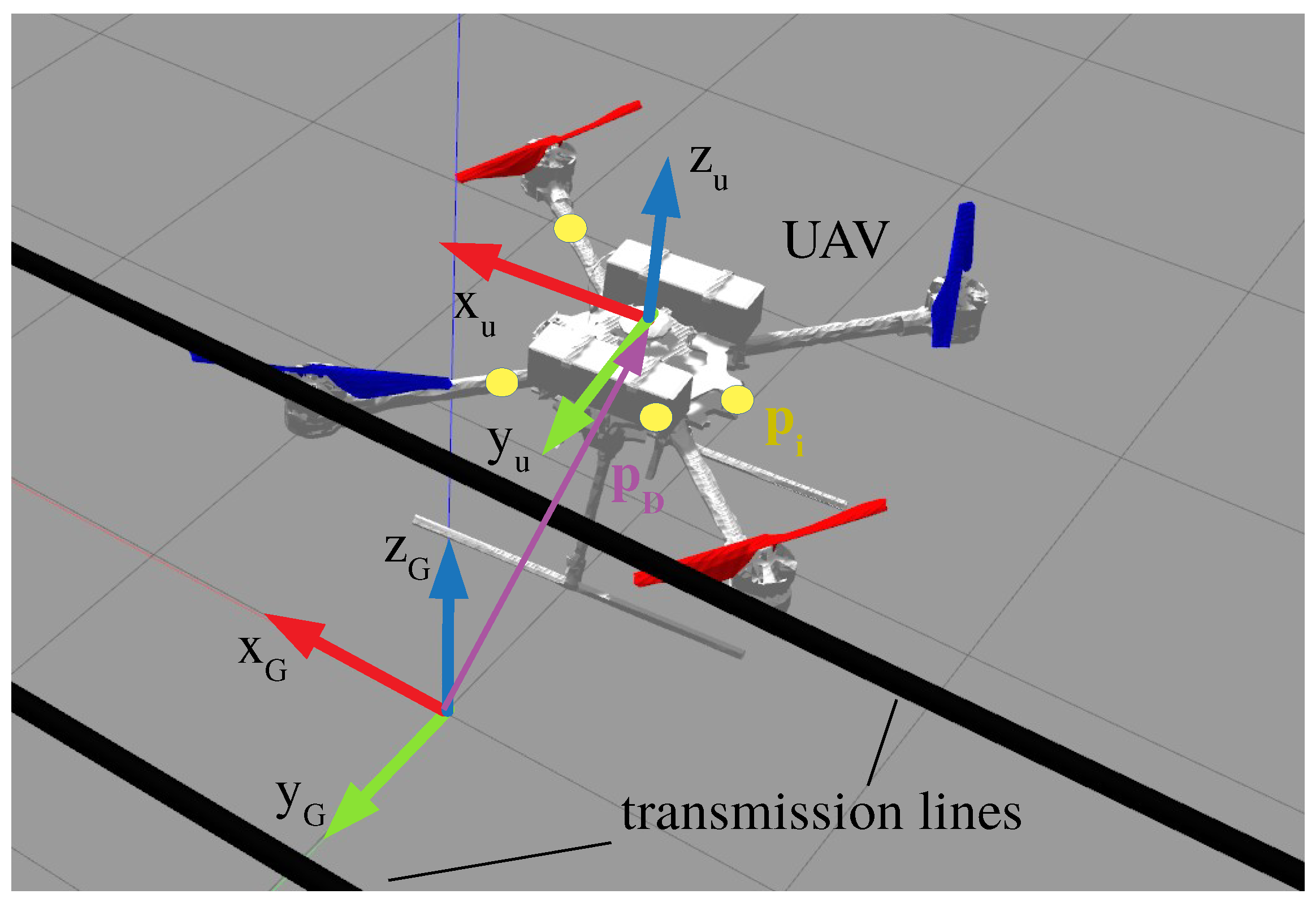
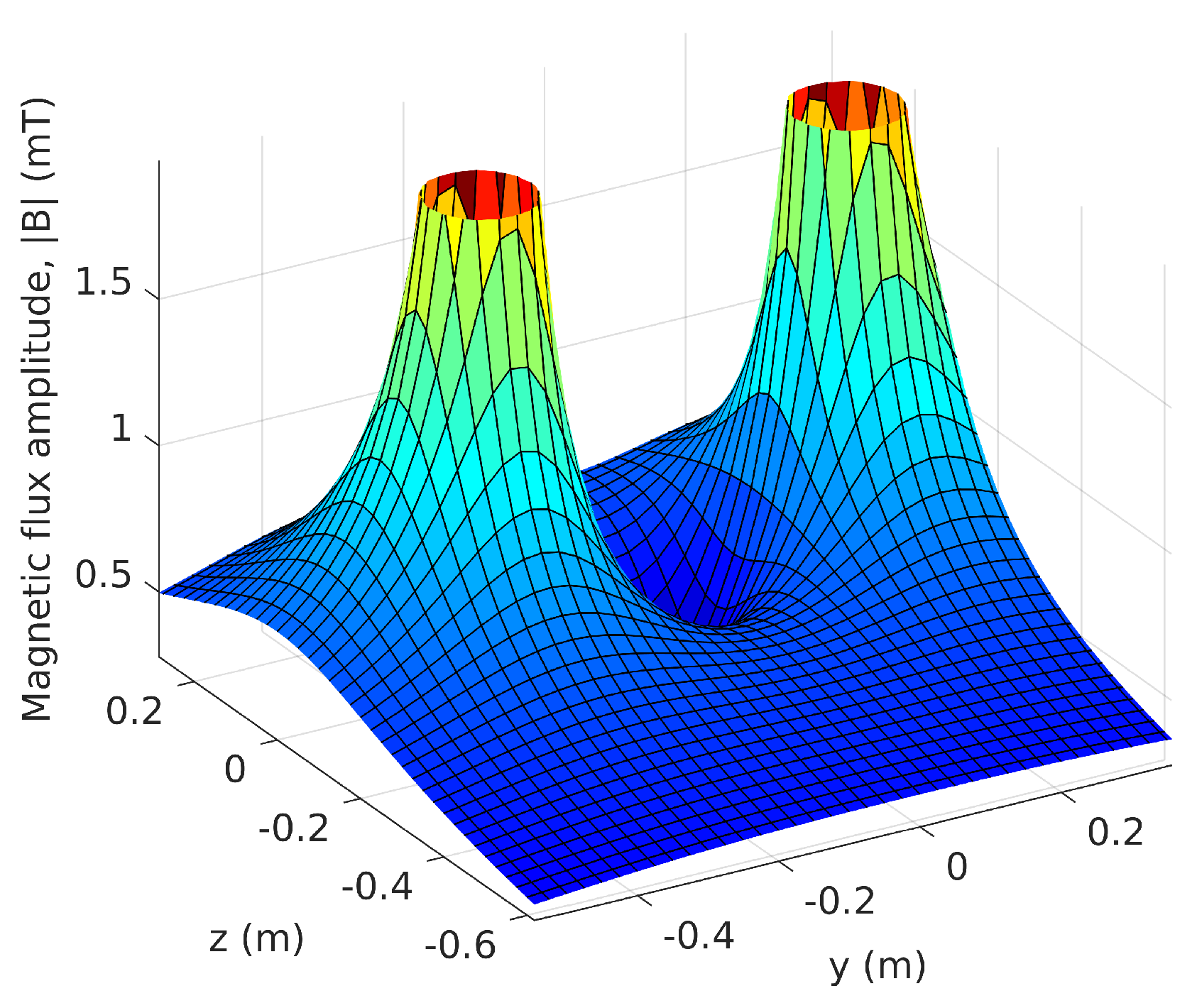
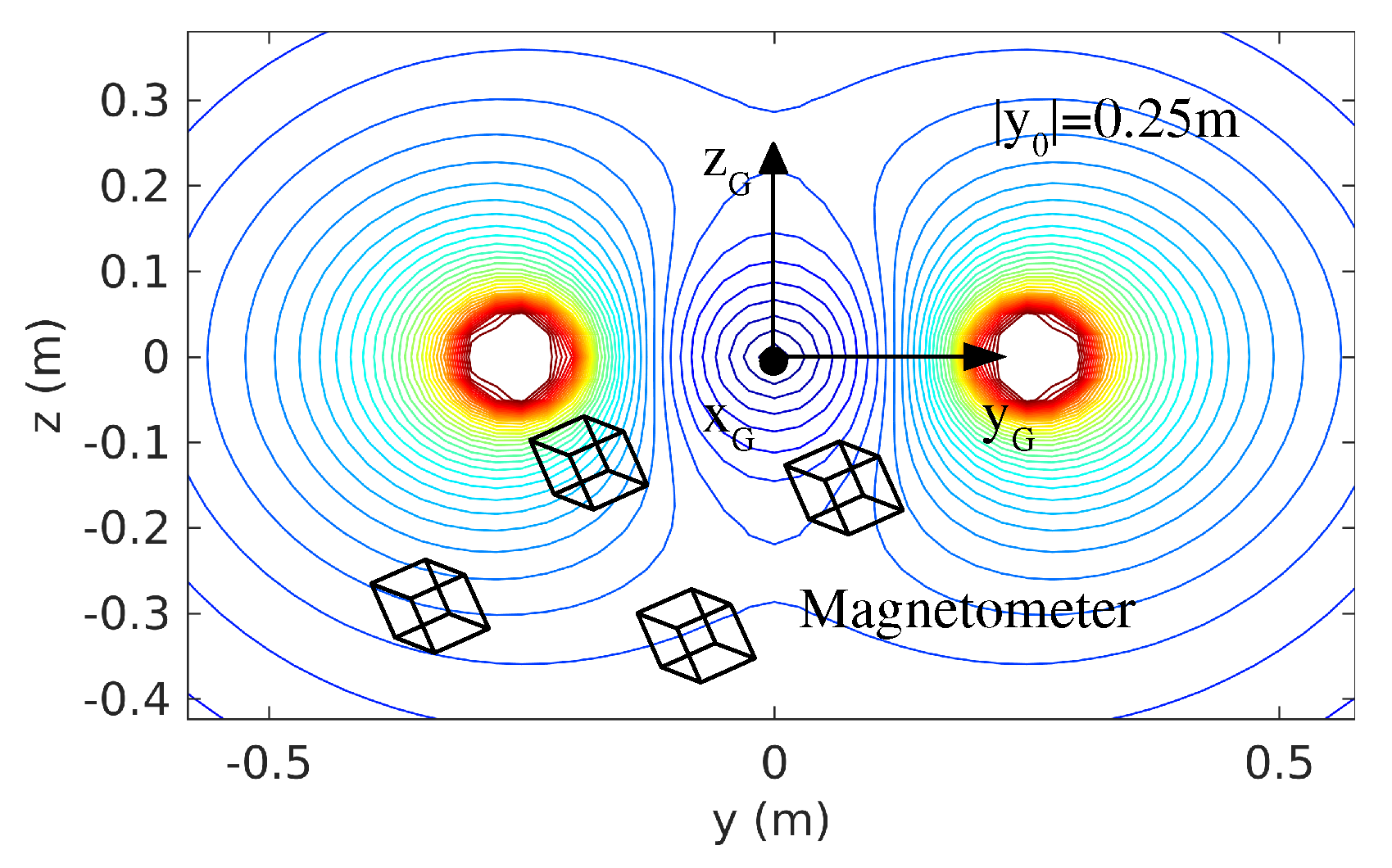
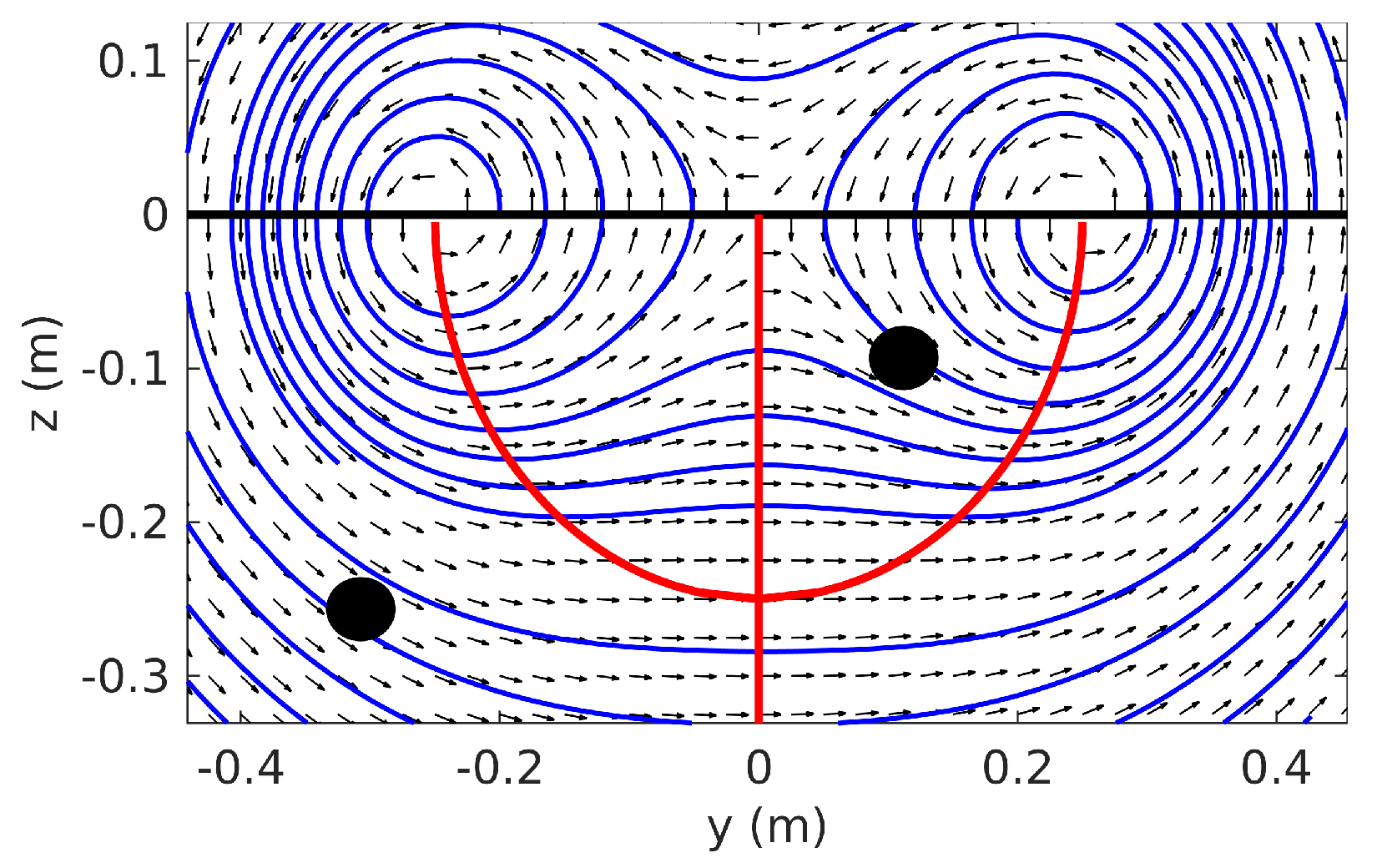
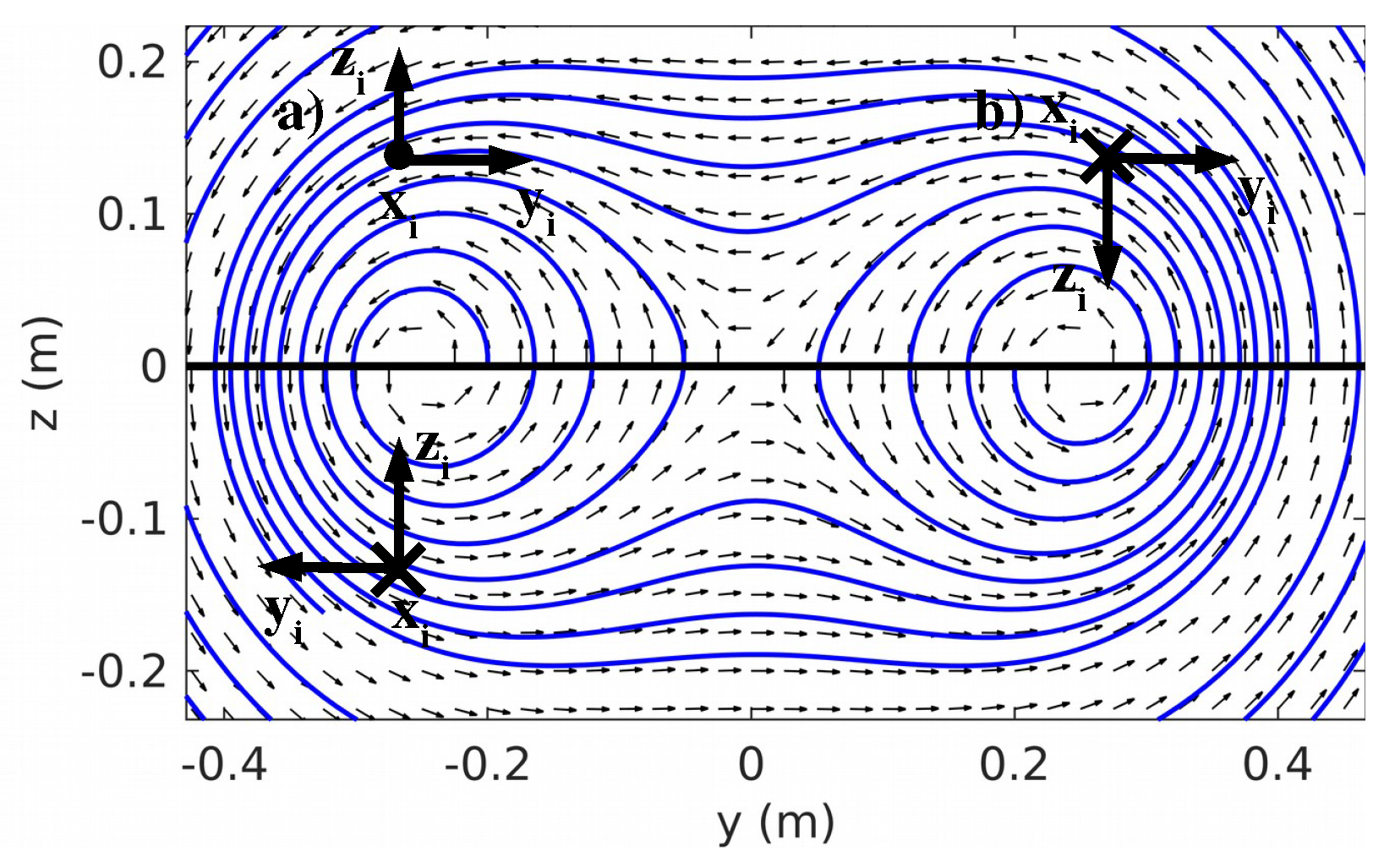
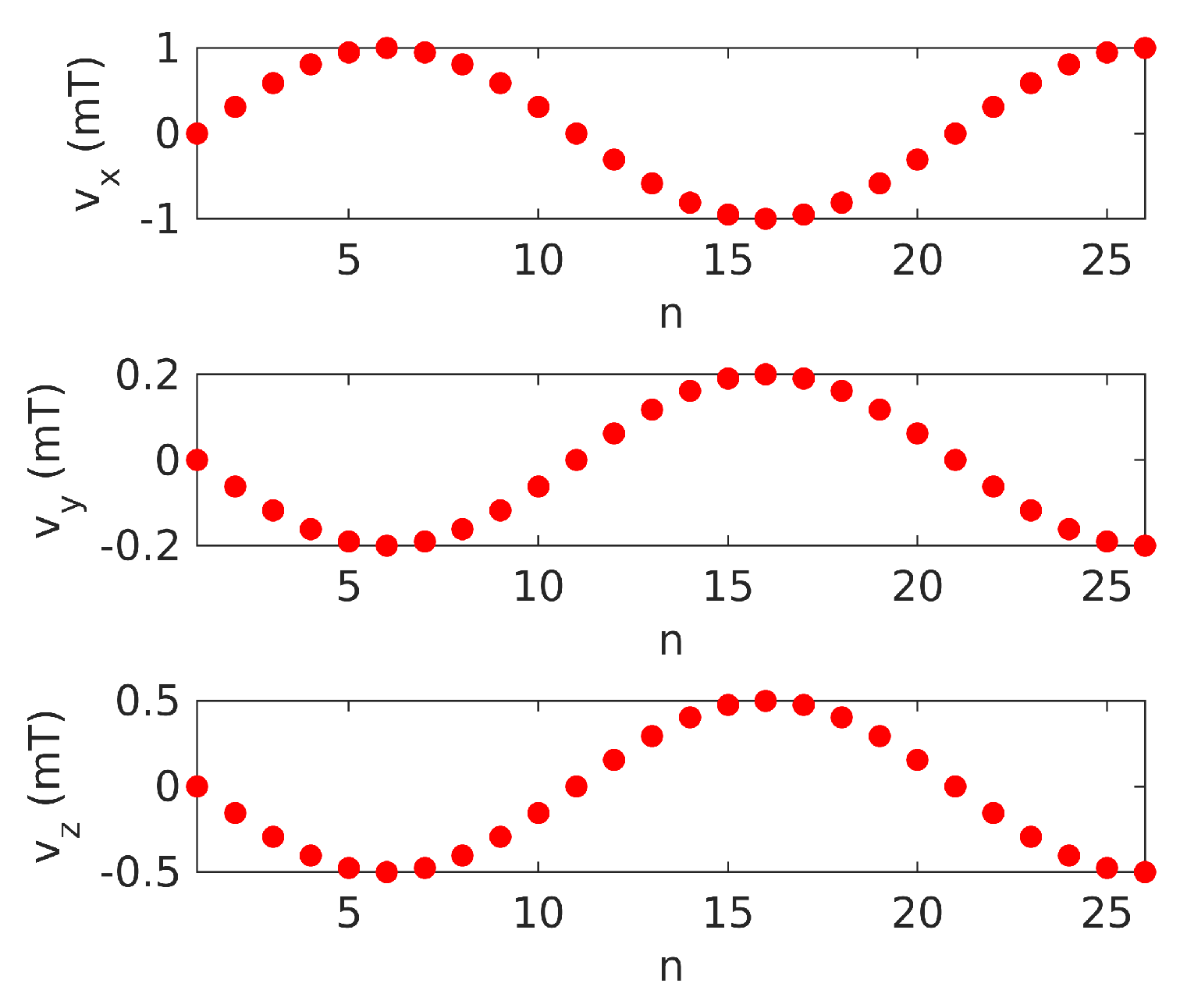
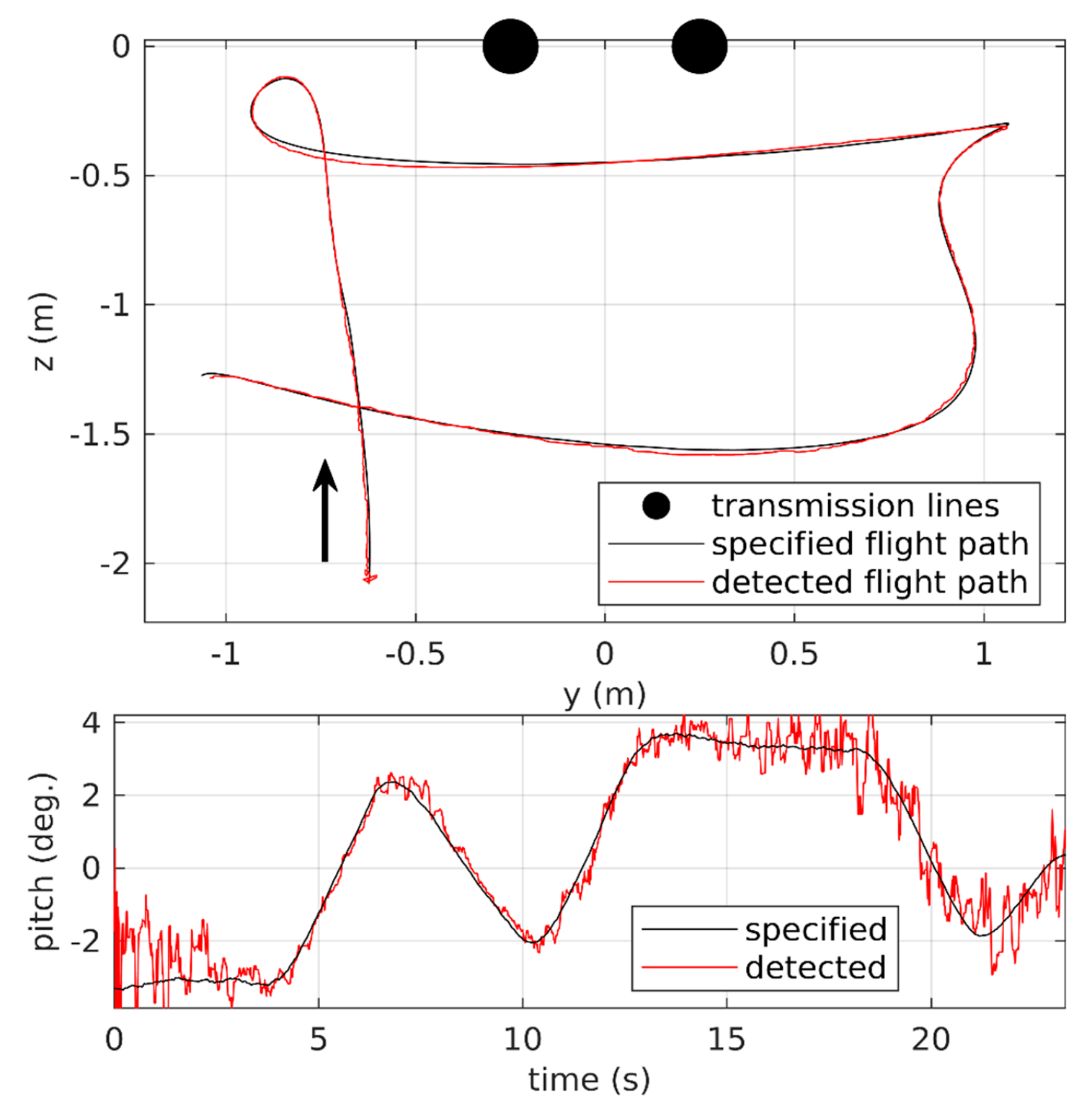
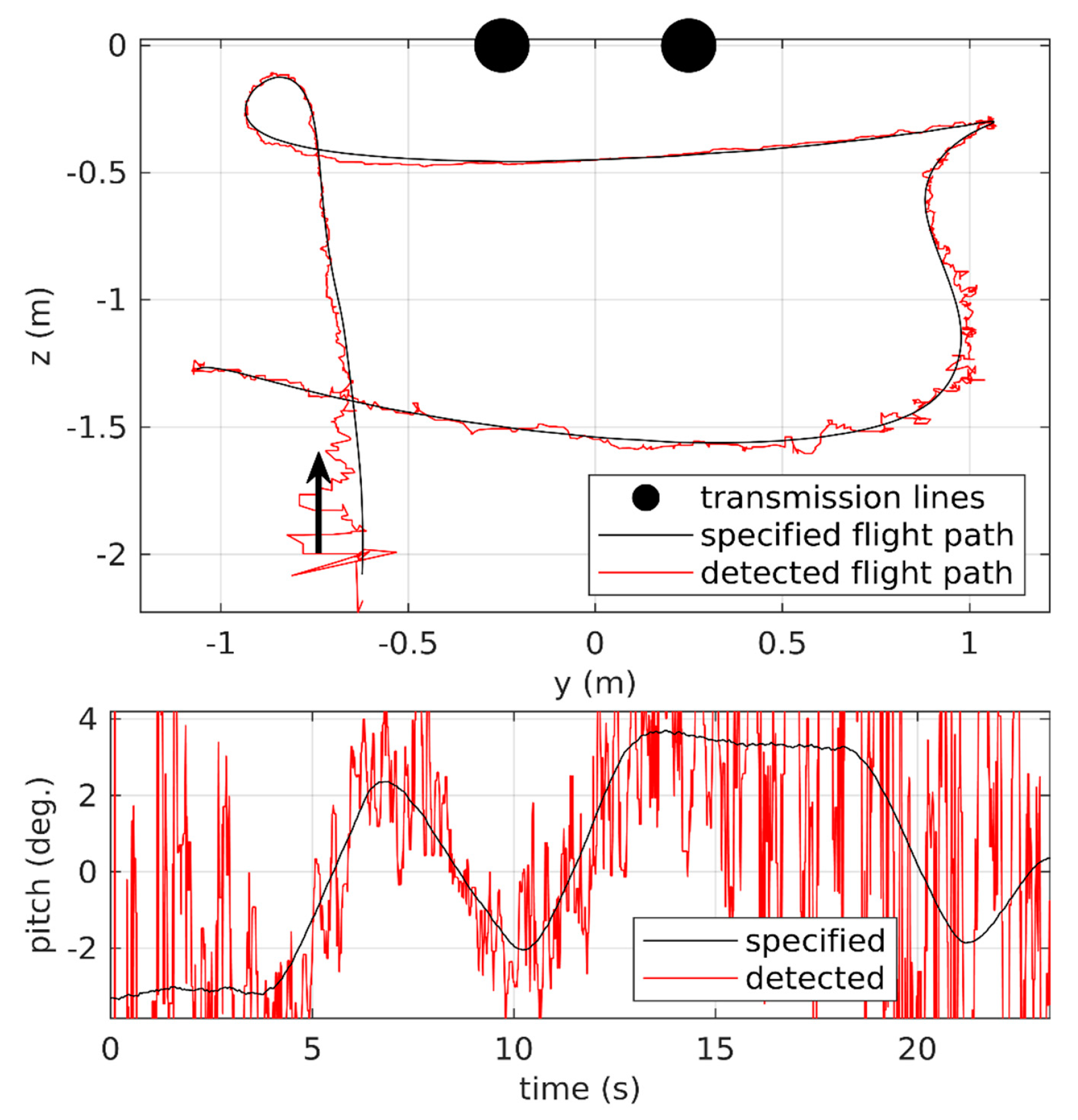
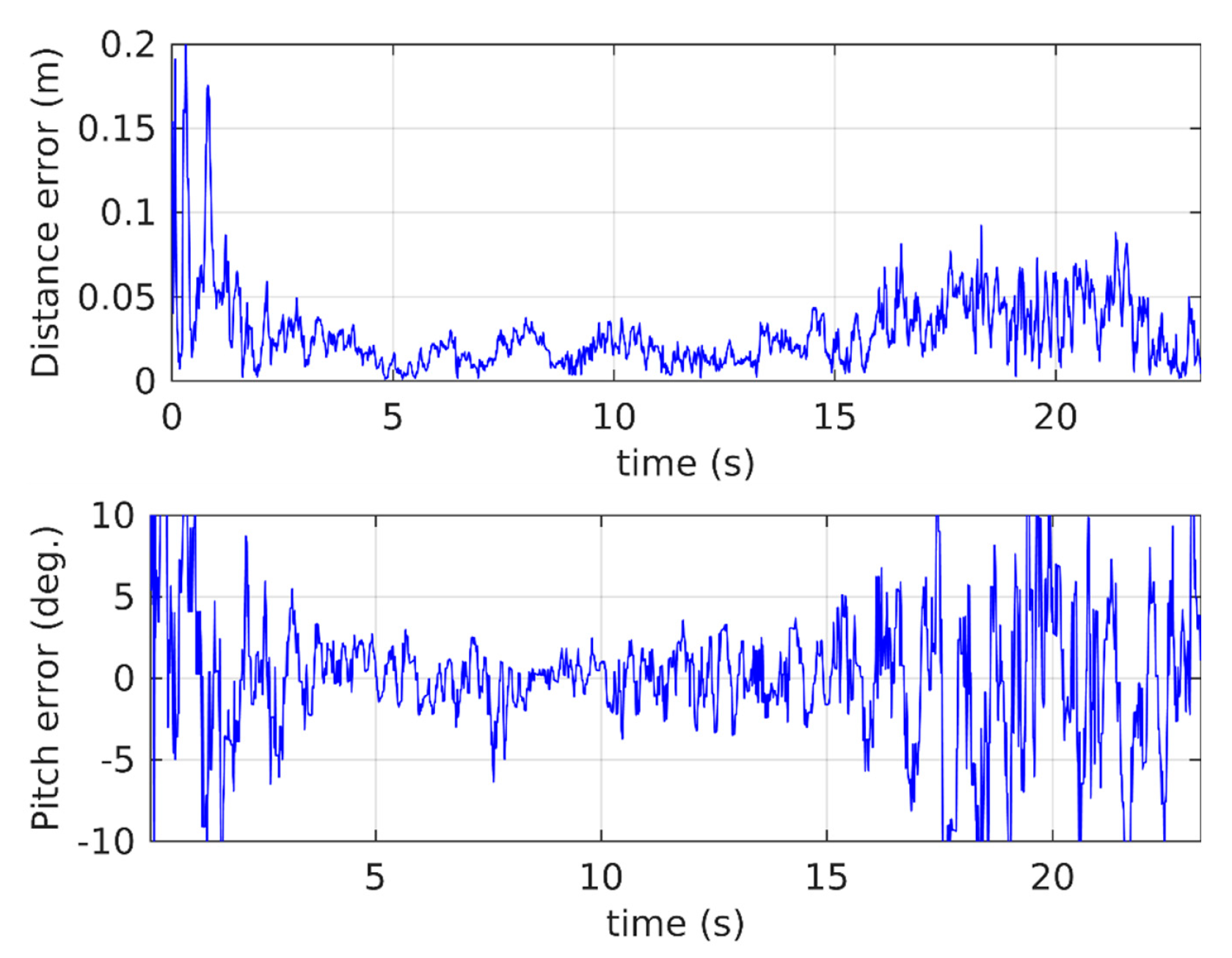
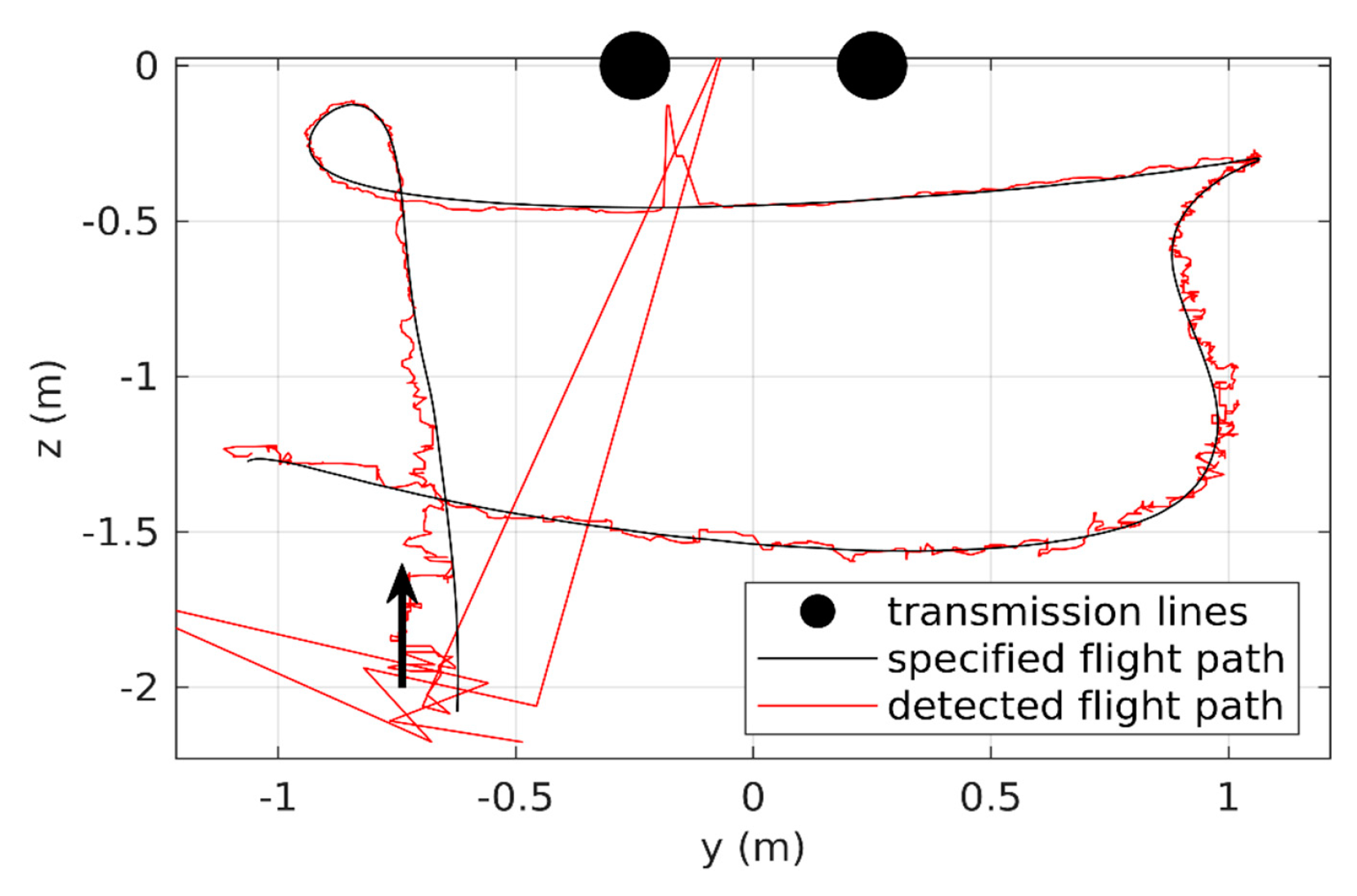
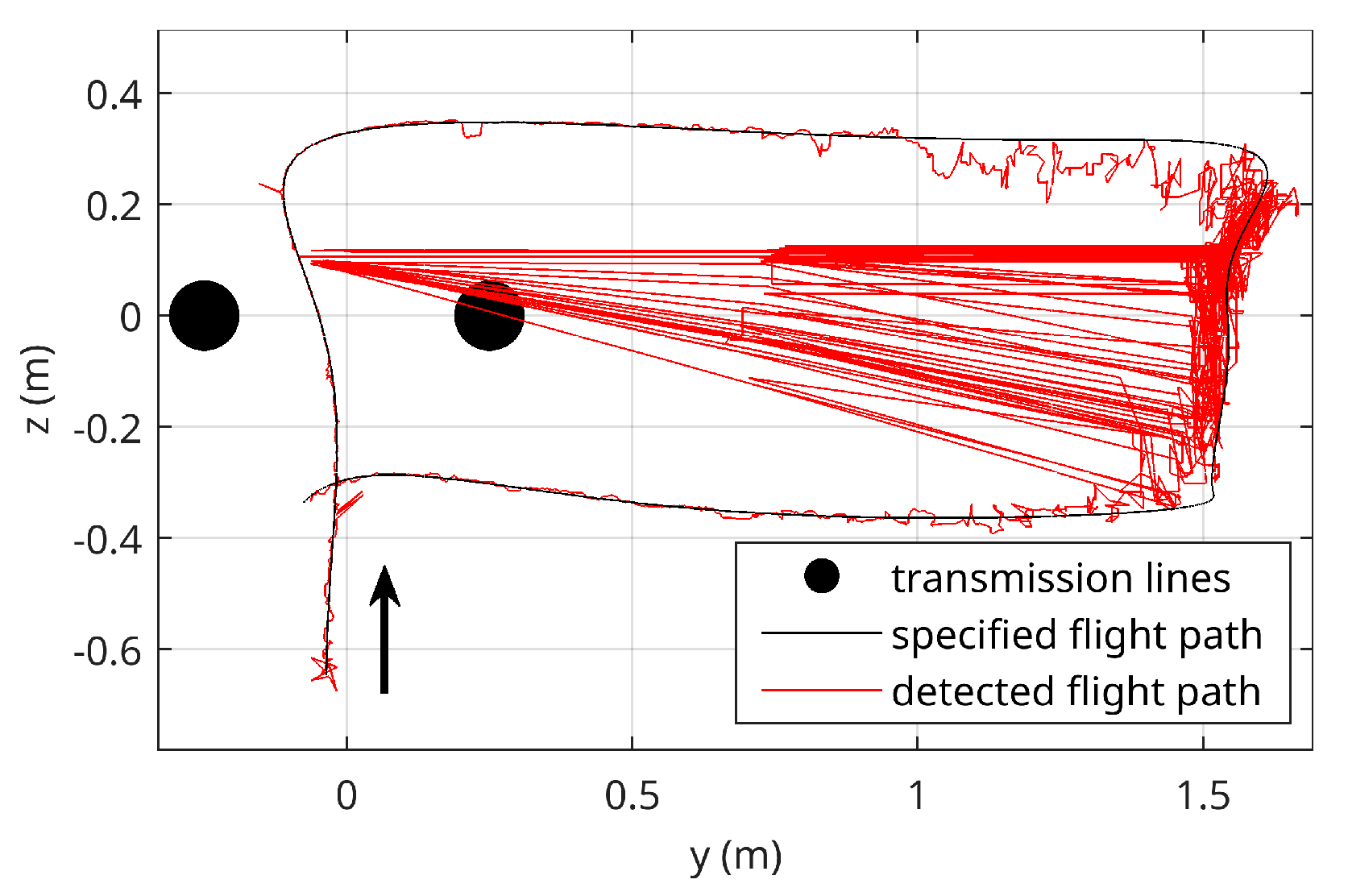
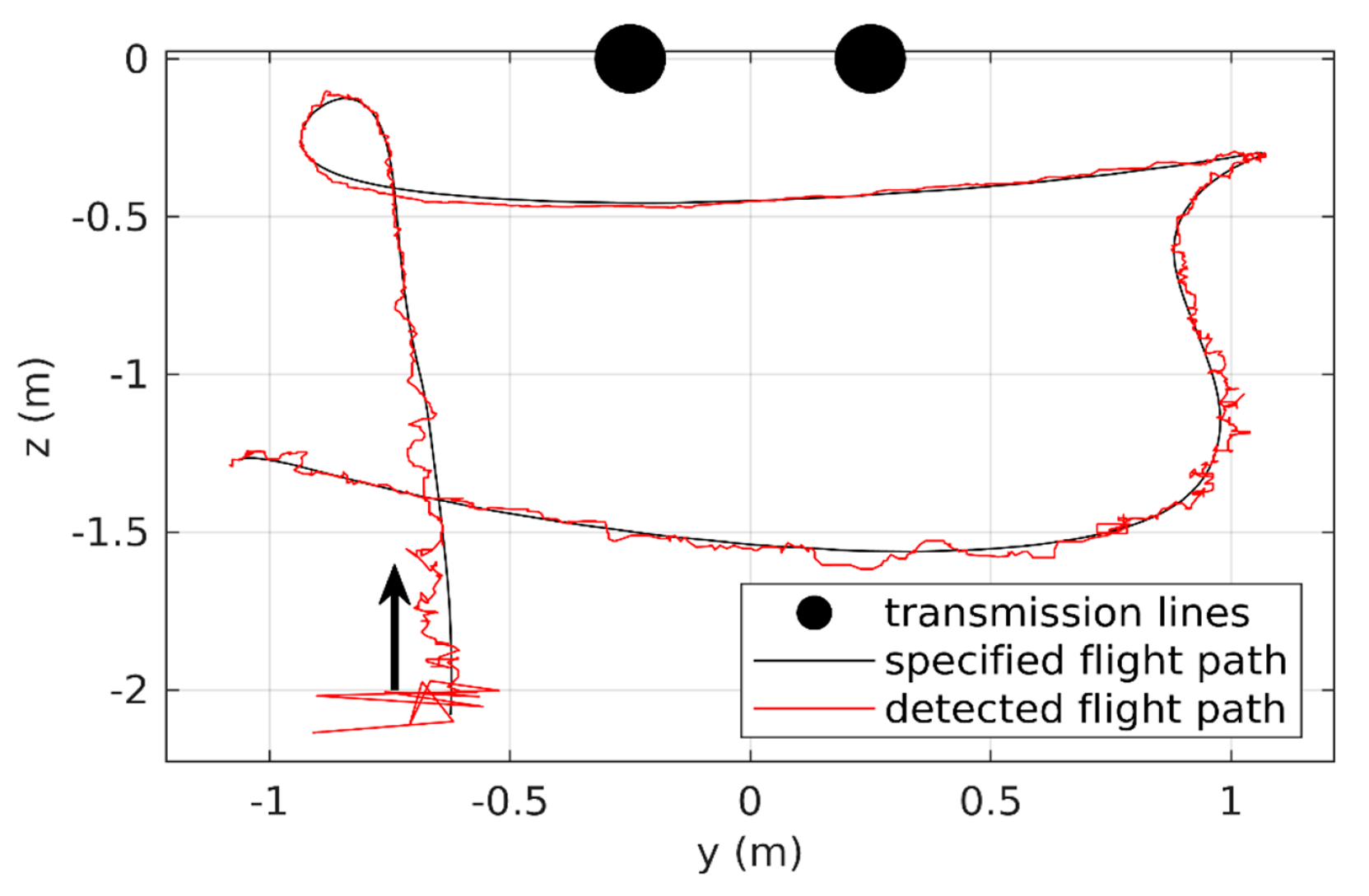
Publisher’s Note: MDPI stays neutral with regard to jurisdictional claims in published maps and institutional affiliations. |
© 2021 by the authors. Licensee MDPI, Basel, Switzerland. This article is an open access article distributed under the terms and conditions of the Creative Commons Attribution (CC BY) license (https://creativecommons.org/licenses/by/4.0/).
Share and Cite
Martinović, D.; Bogdan, S.; Kovačić, Z. Mathematical Considerations for Unmanned Aerial Vehicle Navigation in the Magnetic Field of Two Parallel Transmission Lines. Appl. Sci. 2021, 11, 3323. https://doi.org/10.3390/app11083323
Martinović D, Bogdan S, Kovačić Z. Mathematical Considerations for Unmanned Aerial Vehicle Navigation in the Magnetic Field of Two Parallel Transmission Lines. Applied Sciences. 2021; 11(8):3323. https://doi.org/10.3390/app11083323
Chicago/Turabian StyleMartinović, Dean, Stjepan Bogdan, and Zdenko Kovačić. 2021. "Mathematical Considerations for Unmanned Aerial Vehicle Navigation in the Magnetic Field of Two Parallel Transmission Lines" Applied Sciences 11, no. 8: 3323. https://doi.org/10.3390/app11083323
APA StyleMartinović, D., Bogdan, S., & Kovačić, Z. (2021). Mathematical Considerations for Unmanned Aerial Vehicle Navigation in the Magnetic Field of Two Parallel Transmission Lines. Applied Sciences, 11(8), 3323. https://doi.org/10.3390/app11083323





